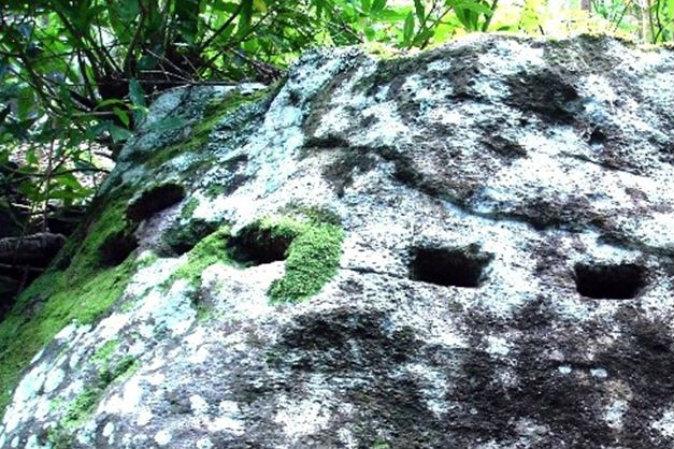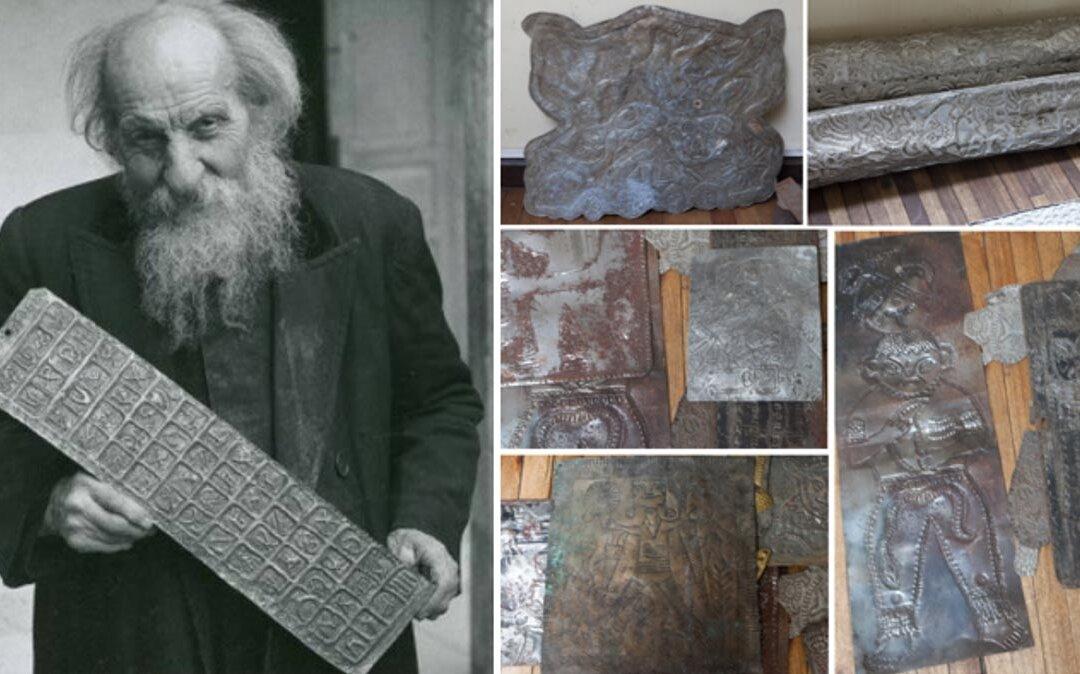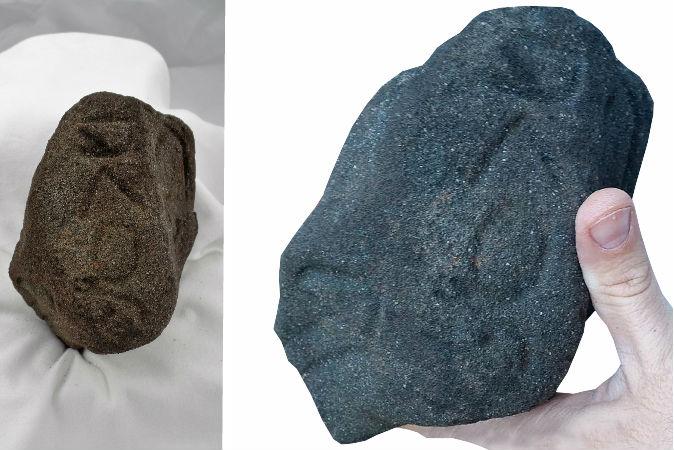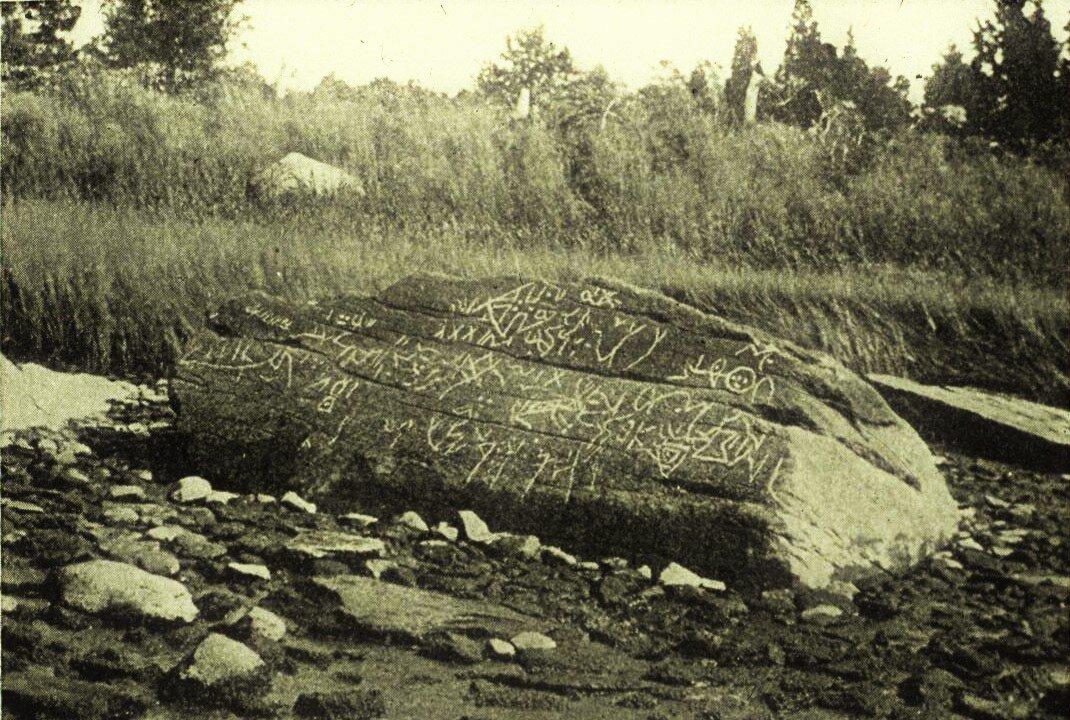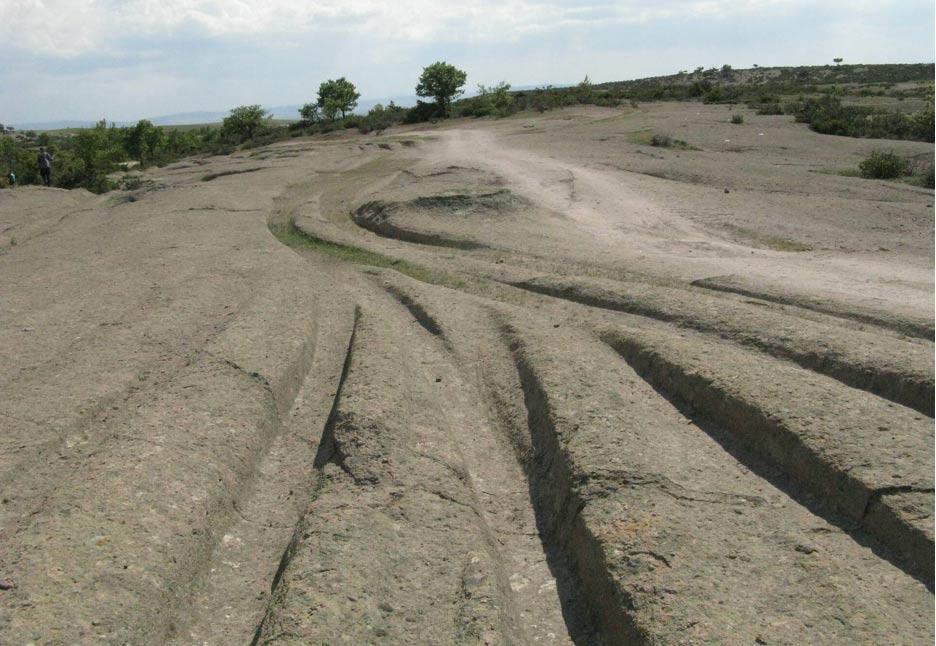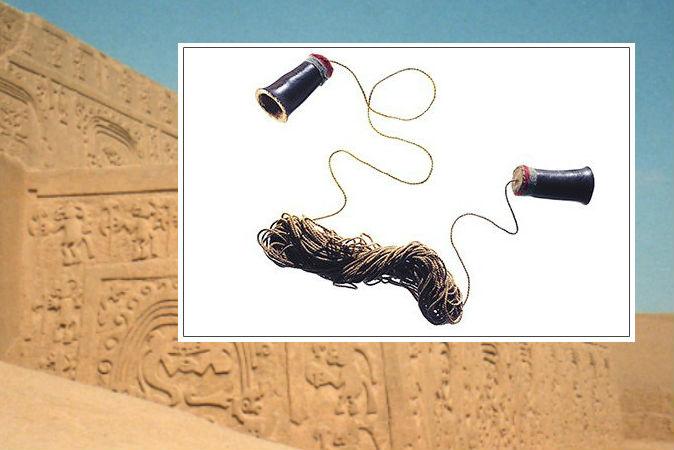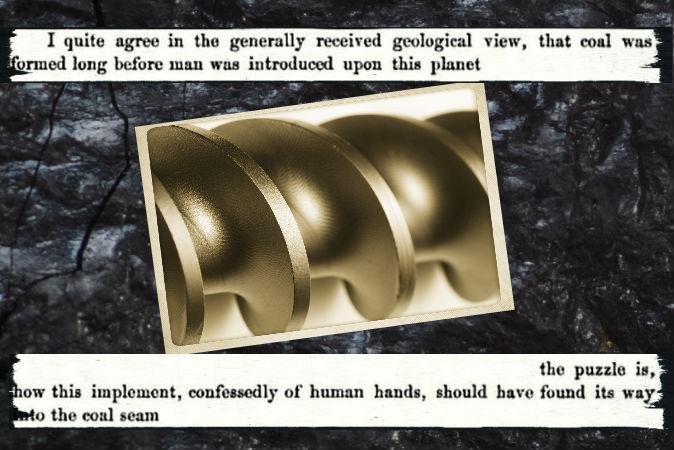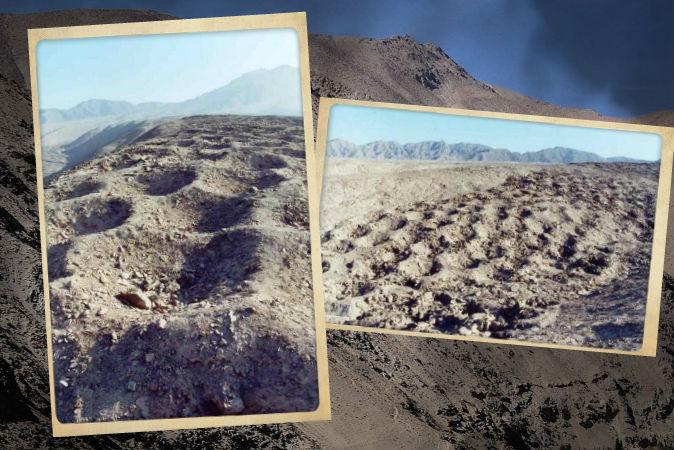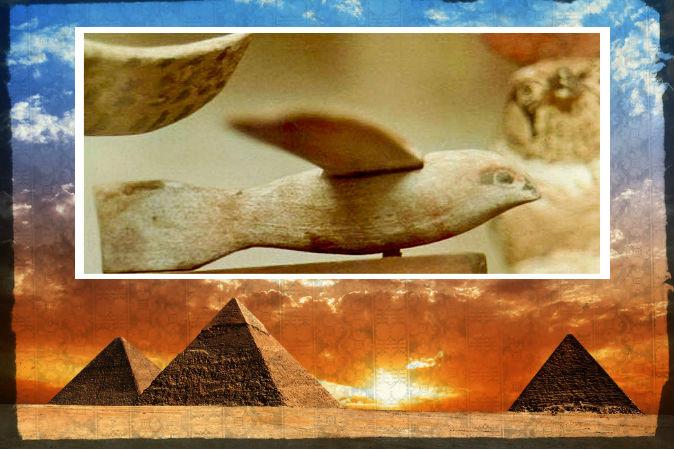Focus
oopart
The Truth About Father Crespi’s Controversial Missing Artifacts
Ancient Origins investigates artifacts in Ecuador that could provide evidence of unknown civilizations, connections between America and Sumeria, a Vatican conspiracy, and more.
|
Jackson County Artifact Adds Mystery to Area’s History
History is slow to share its secrets, but did recently for a rural Jackson County man while clearing an area of his property.
|
Who Made the Petroglyphs on the Mysterious Dighton Rock?
Are the symbols on the Dighton Rock Native American? Norse? Phoenician? Chinese? Portuguese? Japanese? All or none of the above?
|
Evidence of Ancient Nuclear Explosions on Mars, Says Scientist
Ancient nuclear reactions on Mars and Earth are said to be “natural,” but are they?
|
Controversial Claim by Geologist: Mysterious Tracks in Turkey Left by Civilization Millions of Years Ago
Geologist Dr. Alexander Koltypin hypothesizes that prehistoric ruts in stone were left by heavy-duty ancient vehicles—not light chariots or wagons.
|
17 Out-of-Place Artifacts Said to Suggest High-Tech Prehistoric Civilizations Existed
Did prehistoric civilizations possessed advanced technological knowledge that was lost throughout the ages only to be redeveloped in modern times?
|
1,200-Year-Old Telephone, Amazing Invention of the Ancient Chimu Civilization
This advanced device “comes from the consciousness of an indigenous society with no written language,” said anthropologist Ramiro Matos.
|
Underwater Discovery: 9,300-Year-Old Pillar Evidence of Advanced Society, Say Researchers
The idea of “technological primitivism” often attributed to hunter-gatherer coastal settlers must be reevaluated, say Emanuele Lodolo and Zvi Ben-Abraham.
|
Timeless Mystery: How Could a Swiss Ring-Watch End up in a Sealed Ming Dynasty Tomb?
Did a time-traveler, a mouse, or a hoaxer involved in the dig leave this ring in the centuries-old tomb?
|
Out of Place in Time: Petrified Wooden Tools Buried Deep in Limestone
They had dug through 11 layers of limestone, each separated by a bed of sand mixed with clay, and there they found wooden hammer handles and other wooden tools petrified into agate.
|
Drill Bit Found in Coal Suggests Advanced Civilization LONG Before Humans Thought to Walk Earth?
Oopart (out of place artifact) is a term applied to dozens of prehistoric objects found in various places around the world that seem to show a level of technological advancement incongruous with the times in which they were made.
|
New Evidence Ancient Chinese Explorers Landed in America Excites Experts
Will the history books change? Evidence suggests the Chinese got to America before the Europeans.
|
Is This Really a 250-Million-Year-Old Microchip?
Was there computer technology 250 million years ago? Epoch Times investigated this much-discussed discovery.
|
Did Humans Walk the Earth With Dinosaurs? Triceratops Horn Dated to 33,500 Years
A triceratops brow horn discovered in Dawson County, Mont., has been controversially dated to around 33,500 years, challenging the view that dinosaurs died out around 65 million years ago.
|
Speakers at Science Congress Say Ancient India Mastered Advanced Space Flight Thousands of Years Ago
A controversial paper presented at the prestigious science conference, the 102nd Indian Science Congress in Mumbai, claims human aviation and advanced space flight was achieved and mastered by the ancient Indians, thousands of years before the Wright brothers in 1903.
|
Miles-Long Band of Mysterious, Unexplained Holes in Peru
A mysterious site spans the landscape of Pisco Valley, Peru. On the same plateau where the famous Nazca Lines are found, thousands of holes have been carved into rock, creating a band that stretches further than a mile. It is unknown who carved these holes, or why they were created, but it is clear that this vast creation must have been a painstaking job, requiring many hours of manpower.
|
6 Advanced Ancient Inventions Beyond Modern Understanding
We’ve lost the secret to making some of history’s most useful inventions, and for all of our ingenuity and discoveries, our ancestors of thousands of years ago are still able to baffle us with their ingenuity and discoveries.
|
Did Ancient Egyptians Have Airplanes? Mechanical Engineer Thinks So
The pyramids and other advanced artifacts from ancient Egypt continue to awe archaeologists and archaeology enthusiasts, but is it possible the ancient Egyptians had aviation?
|
The Truth About Father Crespi’s Controversial Missing Artifacts
Ancient Origins investigates artifacts in Ecuador that could provide evidence of unknown civilizations, connections between America and Sumeria, a Vatican conspiracy, and more.
|
Jackson County Artifact Adds Mystery to Area’s History
History is slow to share its secrets, but did recently for a rural Jackson County man while clearing an area of his property.
|
Who Made the Petroglyphs on the Mysterious Dighton Rock?
Are the symbols on the Dighton Rock Native American? Norse? Phoenician? Chinese? Portuguese? Japanese? All or none of the above?
|
Evidence of Ancient Nuclear Explosions on Mars, Says Scientist
Ancient nuclear reactions on Mars and Earth are said to be “natural,” but are they?
|
Controversial Claim by Geologist: Mysterious Tracks in Turkey Left by Civilization Millions of Years Ago
Geologist Dr. Alexander Koltypin hypothesizes that prehistoric ruts in stone were left by heavy-duty ancient vehicles—not light chariots or wagons.
|
17 Out-of-Place Artifacts Said to Suggest High-Tech Prehistoric Civilizations Existed
Did prehistoric civilizations possessed advanced technological knowledge that was lost throughout the ages only to be redeveloped in modern times?
|
1,200-Year-Old Telephone, Amazing Invention of the Ancient Chimu Civilization
This advanced device “comes from the consciousness of an indigenous society with no written language,” said anthropologist Ramiro Matos.
|
Underwater Discovery: 9,300-Year-Old Pillar Evidence of Advanced Society, Say Researchers
The idea of “technological primitivism” often attributed to hunter-gatherer coastal settlers must be reevaluated, say Emanuele Lodolo and Zvi Ben-Abraham.
|
Timeless Mystery: How Could a Swiss Ring-Watch End up in a Sealed Ming Dynasty Tomb?
Did a time-traveler, a mouse, or a hoaxer involved in the dig leave this ring in the centuries-old tomb?
|
Out of Place in Time: Petrified Wooden Tools Buried Deep in Limestone
They had dug through 11 layers of limestone, each separated by a bed of sand mixed with clay, and there they found wooden hammer handles and other wooden tools petrified into agate.
|
Drill Bit Found in Coal Suggests Advanced Civilization LONG Before Humans Thought to Walk Earth?
Oopart (out of place artifact) is a term applied to dozens of prehistoric objects found in various places around the world that seem to show a level of technological advancement incongruous with the times in which they were made.
|
New Evidence Ancient Chinese Explorers Landed in America Excites Experts
Will the history books change? Evidence suggests the Chinese got to America before the Europeans.
|
Is This Really a 250-Million-Year-Old Microchip?
Was there computer technology 250 million years ago? Epoch Times investigated this much-discussed discovery.
|
Did Humans Walk the Earth With Dinosaurs? Triceratops Horn Dated to 33,500 Years
A triceratops brow horn discovered in Dawson County, Mont., has been controversially dated to around 33,500 years, challenging the view that dinosaurs died out around 65 million years ago.
|
Speakers at Science Congress Say Ancient India Mastered Advanced Space Flight Thousands of Years Ago
A controversial paper presented at the prestigious science conference, the 102nd Indian Science Congress in Mumbai, claims human aviation and advanced space flight was achieved and mastered by the ancient Indians, thousands of years before the Wright brothers in 1903.
|
Miles-Long Band of Mysterious, Unexplained Holes in Peru
A mysterious site spans the landscape of Pisco Valley, Peru. On the same plateau where the famous Nazca Lines are found, thousands of holes have been carved into rock, creating a band that stretches further than a mile. It is unknown who carved these holes, or why they were created, but it is clear that this vast creation must have been a painstaking job, requiring many hours of manpower.
|
6 Advanced Ancient Inventions Beyond Modern Understanding
We’ve lost the secret to making some of history’s most useful inventions, and for all of our ingenuity and discoveries, our ancestors of thousands of years ago are still able to baffle us with their ingenuity and discoveries.
|
Did Ancient Egyptians Have Airplanes? Mechanical Engineer Thinks So
The pyramids and other advanced artifacts from ancient Egypt continue to awe archaeologists and archaeology enthusiasts, but is it possible the ancient Egyptians had aviation?
|

